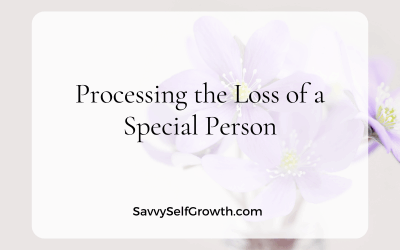Written by Gail Mallinson
Parent and Life Coach
It is that time of the year again, where parents face the challenge of children starting a new year at school, the changes, the challenges and how to get them self-motivated to achieve their goals and be happy at school.
There are a few key factors influencing this success.
Responsibility in goals
It is useful to define each person’s responsibility in the goal. If it is the child’s goal, what is our responsibility as parents and what is the child’s responsibility? As a parent it is our responsibility to facilitate them and give them as many opportunities as possible in order for them to achieve their goal and give them as much information as possible for them to make informed choices. It is their responsibility to make the choices that will enable them to achieve their goal. Do we take responsibility for their choices? What makes us choose to make choices for them? What do we feel if they don’t achieve their goal? Is this about us, or is it about their goals?
Our responsibility
- Talk to them about what they want and encourage them to think about what they want.
- Teach them how to set goals.
- Give them opportunities to carry out the action steps.
- Be aware and communicate when you see them moving toward their goal.
- Be aware and communicate when you see them moving away from their goal.
- Have discussions about the different meanings of situations – facilitate them in finding meanings that benefit them.
- Discuss consequences of choices and other options.
Their responsibility
- Work out what they want.
- Set a goal with action steps to follow.
- Follow action steps.
- Evaluate whether the steps they are taking is moving toward their goal.
- Adjust their steps if necessary.
- Achieve their goal.
Finding their value in the goal
Sometimes children are unsure about why they need to achieve a goal. They might know that they want to do well at school, but are not clear about what makes that important for them. Having a discussion with them helps them to determine what benefit they will get from achieving the goal. What is important to them (their values)? How can their values be incorporated into their goal? Once they can see their value, they are more motivated to achieve it.
Breaking down the goal
Breaking a goal down into manageable pieces enables them to focus on one thing at a time. They are then also able to measure their progress and see small successes along the way to keep them motivated.
Constant feedback and reward during the process
Being aware and teaching them to be aware and listen for feedback as they achieve the small pieces is essential. Acknowledging success develops confidence which leads to improved performance.
My Story
When my son was in grade 2, his teachers told me that he was unable to keep up with the rest of the class. They advised me to keep him back a year, which I did.
Little did I realise what an impact that would make on his sporting opportunities. All through primary school and the beginning of high school he was reluctant and chose not to play team sports as he would always have to play with the children in the grade above him. This also affected his confidence.
In grade 8 he wanted to start playing hockey for school. It was a bumpy start, there were many days he would come home not having had much game time, angry that his team mates didn’t pass to him. He then decided that he wanted to play 1st team hockey (his value)…..then he would play with better players and that would solve the problem.
This felt like a big goal to me, but I kept that to myself (separated my limitation from his goal). We broke the goal down into more manageable parts and focussed on small bits at a time. We started to talk about how he was going to achieve this and what he needed to do in order to achieve it. His answer to me was that he needed to be fit, he needed to have good ball skills, his coaches needed to notice him and his team mates needed to pass to him.
We started with the first one: Fitness: I asked him what fitness he needed or where he needed to be fit? He decided that he needed to be good at sprinting and his overall endurance to not get tired during the game was important. He started to practice sprinting each day at home and would also go for longer runs in the afternoon. After a while his coach noticed that he was fitter and this encouraged him (feedback/reward). It was then time to focus on the next part (while maintaining his fitness). He started to practice his passing shots in the garden. He practised his accuracy, his swing and the speed of his shots. One day during a match he had an opportunity to hit a ball down the length of the field and he hit a winner. Everyone wowed him and he felt great! (feedback/reward)
He still found that his team mates weren’t passing to him as often as he liked. We started looking at how to develop rapport with his team mates, and his coaches. He practised making a conscious effort to greet the players and his coaches/teachers by name each time he saw them at school and at the beginning of practise. He looked for, and took opportunities to acknowledge them when they played well. He said goodbye to them after matches and practises. He looked for opportunities to have conversations with them during times they sat together. After a while he felt better about his relationship with them. Toward the end of the year when it was time for 1st team trials, he had learnt a lot and was confident to try out. He made first team hockey. What an achievement for him!
Conclusion
Sometimes the things we want or the goals we have seem so big, that we don’t know where to start, or what steps to take in order to achieve them. Often, we then get side tracked along the way and loose interest if we are not getting feedback to spur us on. Breaking goals down, as we did with the hockey, enables us to stay focused, notice and acknowledge the small successes which encourage us to carry on, until we achieve the end result.
I realised that day, when my son made the team, how important it was for me, as his parent, not to have voiced MY feelings of limitation about HIS goal, but to help and guide him to focus on how he was going to achieve it!
If we can teach our children how to set their own goals and be self-motivated in their early years, they will be well grounded and capable to handle high school and teenager pressures.
In my workshop, you learn about what drives our behaviour as parents when it comes to our children’s goals, what drives their behaviour, how to communicate with and teach them to set their own goals and become self-motivated. The awesome part about learning this, is that we as parents can use it for our own goals too.
A bit about Gail
 After the birth of my second (special needs) son who did not fit into any box or any of the rules I had grown up with….my journey to search for answers on how to parent and educate him started. On that journey I discovered so much more than how to parent my children, I discovered myself!
After the birth of my second (special needs) son who did not fit into any box or any of the rules I had grown up with….my journey to search for answers on how to parent and educate him started. On that journey I discovered so much more than how to parent my children, I discovered myself!
While following a career in finance, I attended many parenting and personal development workshops, and finished my training in EFT (Emotional Freedom Techniques) and NLP (Neuro Linguistic Programming). My passion is to share this understanding and these solutions with parents, teachers and children so they can become happy, confident and successful adults.
Opportunity to learn from Gail
Parenting from a Different Perspective
Learn how to communicate effectively and understand what drives your child’s behaviour and your own, when parenting them, with the aim of creating confident self-motivated children and satisfying your own needs at the same time.
Relevant age: All parents
Date: 4 Wednesday evenings 5, 12, 19, 26 March 2014
Time: 6pm-9pm
Venue: Good Vibrations Health Sanctuary, 9A Eleventh Avenue (corner Homestead Road), Rivonia, Gauteng.
Cost: R2 900.00 per person. Bring a friend/partner/spouse and you each pay R2700.00
Contact: Gail Mallinson 083 267 4624 gail.mallinson@gmail.com




